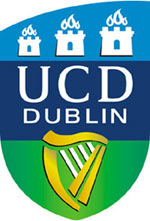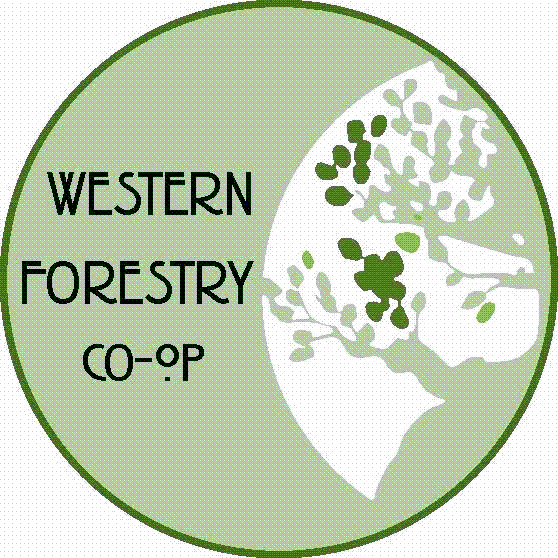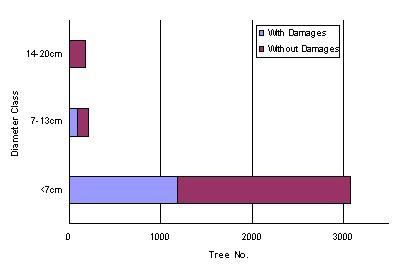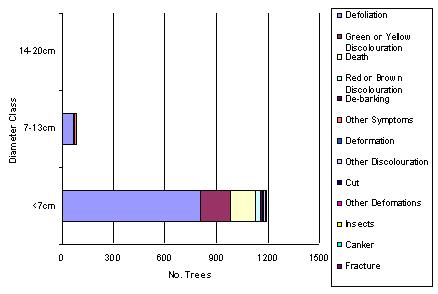Costs
Total Cost €12352.00
Shared Cost €12762.00
Marginal Cost €-410
Total Cost/ha €0.35
These cost include:
| Measure DBH |
| Record the damages |
| Identify the damage agent |
| Data processing of the forest health |
| Travel to the plots |
| Time finding & installing the plots |
| Prepare sampling plan |
| Purchase maps of the plots |
| Organise the data collection points |
| Computer & software for forest health |
Results
Figure 2.4.3a: Number of Trees Damaged by diameter class.
Figure 2.4.3b: No of trees damaged classified by damage type per diameter class.
Remarks
Most of the trees recording damages fell into the less than merchantable timber class (<7cm). In the 7-13cm (pulpwood) diameter class it was nearly 50/50 with and without damages. Interestingly in the 14-20cm (sawlog) diameter class there was no damage to any of the trees albeit the amount of trees in the class was low.
Where the trees were classified by damage type per diameter class in figure 8 the results show that again the damages were mainly in the <7cm diameter class, with defoliation being the major damage which would be typical in young trees. Green or yellow discolouration in the needles was most prevalent in the <7cm diameter class and again would be expected in both young trees and trees of low volumes. Death to the branches and shoots was the third major damage to occur in the pilot zone which together with defoliation amounted to >80% of the damages in the <7cm diameter class and all three damages are typical of young trees which have not yet closed canopy are therefore susceptible to damage by both biotic (insect, nutritional disorder) and abiotic (wind, frost) factors.
Problems ans Improvements
Remarks and Conclusions
The results indicate the problems associated with young trees. The fact that defoliation and discolouration were the major damage types recorded, it could therefore be perceived that this would effect the capacity of the trees to increase in volume, however when trees are young they have a stronger ability to recover from damage disorders and therefore the usefulness of this information in young trees could be questionable.



A community initiative ERDF
INTERREG the IIIB Atlantic Area

